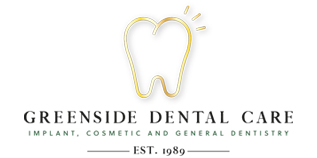Teeth get chipped easily for all manner of reasons – accidents and injuries to the face or head, even biting very hard food or using your teeth to open bottles (which should always be avoided). It is important to get chipped teeth repaired as soon as possible, because even the tiniest crack can allow bacteria to enter your tooth, leading to the possibility of a painful infection and the need for root canal treatment.
Our teeth can also become worn for a variety of reasons, including bruxism – night time tooth grinding – or repeatedly clenching your teeth during the day. If your teeth are excessively worn or chipped, we offer a number of treatment options with which we can restore both aesthetic beauty and functionality.
When you come for an initial consultation with a dentist, they will assess the current condition of your teeth before talking you through the pros and cons of all relevant treatment options.
Composite bonding involves the use of tooth-coloured composite material – the same material that is used for white fillings – to restore and rebuild your teeth. This material is strong and durable, and your dentist will choose a shade of composite that matches the natural colour of your teeth, so the results will look entirely natural. This is a good option for patients on a budget, and treatment can be tailored to suit your individual needs.
Veneers are micro-thin shells of porcelain placed over the front surfaces of the front teeth to improve their appearance and reinforce chipped areas. Very little preparation of the teeth is required, and the results will be both long-lasting and natural looking.
Gum contouring involves reshaping gum tissue to expose more of a tooth, and is good for patients who have a gummy smile. Tooth reshaping involves altering the shape of your teeth with composite material.
Are your teeth stained, chipped, or not aligned on top of each other? Veneers are a good treatment option to consider because they look like natural teeth and don't require a major procedure. Veneers can also be used to close small gaps when braces are not suitable. If one tooth is slightly out of position, a veneer can sometimes be fitted to bring it into line with the others. Here is how they work:
- A veneer is a very thin, tooth-coloured piece of porcelain (like a false finger nail, but more durable) that is bonded on top of your own tooth.
- Based on your needs, the shape and size of the veneers can be adjusted to make your teeth overall look longer and or closer together.
- You can have just one veneer fitted or a whole set, known as a smile makeover.
- Simple and quick solution to improve the cosmetic appearance of teeth.
- Long-lasting smile enhancement.
- Natural-looking restoration.
A crown is a type of dental restoration used to fix teeth that have been broken, weakened by decay or contain a very large filling. Here is how it works:
- An impression is taken of the tooth that needs restoring.
- A crown is made in the dental laboratory to fit the tooth precisely and match the neighbouring teeth.
- The tooth is then prepared and the crown fitted securely on top.
A crown could be a good solution for you if you have some discoloured fillings and would like to improve their appearance. Crowns can be used to replace these to give you a more appealing smile. Additionally, if you have had root canal treatment you will need a crown to protect or cap the restored tooth, allowing you to eat and bite down on it as if it was a real tooth. Crowns are also used to anchor a bridge or denture firmly in place in the mouth.
- Strengthens remaining tooth structure.
- Natural-looking restoration.
- Functions like a real tooth, so you can bite and chew as usual.
In today's world, few of us have the time to visit the dentist for multiple appointments in order to receive dental treatment. At the same time, sitting for hours in a dental chair is not ideal either. One solution to this is called CEREC, a state-of-the-art machine that can make permanent crowns, veneers or onlays for you while you are still in the chair. Here is how it works:
- The dentist will prepare your tooth using a small drill.
- A special camera is then used to take an image of your teeth which is then uploaded to the design unit.
- This image is uploaded to a CAD/CAM unit, which creates a 3D model of your new tooth.
- The model is used by a milling machine, which creates your new tooth from a block of high quality ceramic that best matches your surrounding teeth.
- The restoration is then fixed into place.
- Accurate restoration that strengthens and supports the remaining tooth structure.
- Quick and convenient solution that means you don't need an extra visit to the practice, have to wear a temporary fitting for a few weeks or get anaesthesia twice!
- A natural-looking restoration that blends in well with your surrounding teeth.














